CT Angiography
Computerized Tomographic Angiography (CTA) shows clarity of blood vessels, differentiation between arteries and veins, and, unlike MRA imaging, CTA can capture evidence of calcium deposits. This pioneering technology replaces often-inaccurate stress testing and potentially dangerous catheterization.
What is CT Angiography?
CT Angiography, or CTA, is an examination that combines the use of x-rays with computerized analysis to visualize blood flow in blood vessels throughout the body, from arteries serving the brain to those bringing blood to the lungs, kidneys, arms and legs. From several different angles, x-ray beams pass from a rotating device through the area being studied in the patient’s body to create cross-sectional images. The latter are then assembled by computer into a 3D picture.
CTA is commonly used to:
- Examine the pulmonary arteries in the lungs to rule out pulmonary embolism: a serious but treatable condition
- Visualize blood flow in veins and arteries throughout the body
- Visualize blood flow specifically in the renal arteries in patients with high blood pressure and those suspected of having kidney disorders
- Identify aneurysms in the aorta or in other major blood vessels and identify dissection in the aorta or its major branches
- Identify a small aneurysm or arterio-venous malformation inside the brain that may be life-threatening
- Detect atherosclerotic disease that has narrowed the arteries to the legs
- Detect narrowing or obstruction of arteries in the carotid arteries bringing blood from the heart to the brain
Planning for your procedure
- You must come in to pick up a prep kit at least one (1) day before your exam date.
- On the day of your exam, wear comfortable, loose-fitting clothing
- Avoid clothing with zippers and snaps as metal objects can affect the image
- You may be asked to not eat or drink anything for one or more hours before the exam
- Inform your doctor or x-ray technologist if there is any possibility that you may be pregnant
What can I expect during this procedure?
A CTA scan is a quick, painless procedure. Plan on being with us for a minimum of 30 minutes. The technologist positions you on the CT table. The table moves slowly into the CT scanner opening. The increments of movement may be minimal and almost undetectable, or large enough to feel the motion. You are unaccompanied in the room during your scan, however, your technologist can see, hear and speak with you at all times.
To enhance the visibility of certain tissues or blood vessels, use of contrast material is required. Contrast material is injected through an IV. Before the contrast material is administered, you should inform the technologist if you have:
- Any allergies, especially to medications or iodine
- A history of diabetes, asthma, kidney problems, heart or thyroid conditions. These conditions may indicate a higher risk of reaction to the contrast material or potential problems with eliminating the material from your system after the exam
To determine if more images are needed, you may be asked to wait until the images are reviewed.
You might feel:
- Flushed or have a metallic taste in your mouth. These are common side effects to the contrast material that disappear in a minute or two
- A warm sensation that extends to your bladder
- If the itching persists or is accompanied by hives, it is easily treated with medication
After a CT scan with contrast, the technologist will remove the intravenous line and cover the tiny incision with a small dressing. You may resume your normal activities. A full report will be sent to your referring physician within 48 hours following your exam.
For more information on this topic, please visit radiologyinfo.org CT Angiography (CTA)
CT Angiography: The Gold Standard for Coronary Disease Diagnosis
Lake Medical Imaging offers a wide range of non-invasive tests to detect heart and vascular disease to help your physician plan the best course of treatment.
Coronary CT Angiography (CCTA)
Coronary Computed Tomography Angiography (CCTA) uses CT scanning along with IV contrast material to obtain high-resolution 3D pictures of the moving heart and its great vessels to determine if they’ve narrowed and whether plaque or calcium deposits are present in the artery walls.
CCTA can be performed much faster (in less than one minute) with potentially less risk and discomfort and a shorter recovery time than a cardiac catheterization.
Planning for your CCTA procedure
On the day before and day of your exam, you may be asked to avoid diet pills and caffeinated drinks such as coffee, tea, energy drinks or sodas. These may increase heart rate and limit the ability of the exam to evaluate for plaque in the coronary arteries. Also, Viagra or any similar medication should be avoided the day before.
You may be asked to take a beta blocker medication an hour before the exam to lower your heart rate to optimize the quality of the images.
Tell your doctor if there’s a possibility you are pregnant and discuss any recent illnesses, medical conditions, allergies and medications you are taking.
You will be instructed to not eat or drink anything except clear liquids and to avoid caffeine and smoking for four hours prior to the exam.
Leave jewelry at home and wear loose-fitting, comfortable clothing. You will be asked to wear a gown.
To enhance the visibility of certain tissues or blood vessels, use of contrast material is required. Contrast material is injected through an IV. Before the contrast material is administered, you should inform the technologist if you have:
- Any allergies, especially to medications or iodine
- A history of diabetes, asthma, kidney problems, heart or thyroid conditions. These conditions may indicate a higher risk of reaction to the contrast material or potential problems with eliminating the material from your system after the exam
To determine if more images are needed, you may be asked to wait until the images are reviewed.
You might feel:
- Flushed or have a metallic taste in your mouth. These are common side effects to the contrast material that disappear in a minute or two
- A warm sensation that extends to your bladder
The technologist will remove the intravenous line. You may resume your normal activities. A full report will be sent to your referring physician within 48 hours following your exam.
For more information on this topic, please visit: Radiologyinfo.org Coronary Computed Tomography Angiography (CCTA)
CT for Calcium Scoring
A Calcium Scoring report is included with your Coronary CTA exam or can be performed independently as a screening exam for asymptomatic individuals for $103 and with a doctor’s order. The test takes only a matter of minutes.
Your Calcium Score is calculated by creating multiple images of the heart using the CT scanner. The amount of calcium or hard plaque within the arteries is then determined, and the radiologist calculates the score. The information obtained can help evaluate if you are at increased risk for heart attack.
A summary of your Calcium Score is sent directly to you and a more detailed report to your physician.
Planning for your CT for Calcium Scoring procedure
Tell your doctor if there’s a possibility you are pregnant and discuss any recent illnesses, medical conditions, allergies and medications you are taking. You will be instructed to not eat or drink anything and to avoid caffeine and smoking for four hours prior to the exam. Leave jewelry at home and wear loose-fitting, comfortable clothing. You will be asked to wear a gown.
Calcium Scoring is a quick, painless procedure. Plan on being with us for a minimum of 30 minutes. The technologist will position you on the CT table which moves slowly into the CT scanner opening. The increments of movement may be minimal and almost undetectable or large enough to feel the motion.
A full report will be sent to your referring physician approximately 48 hours following your exam.
For more information on this topic, please visit: Radiologyinfo.org CT for Calcium Scoring





